Like we told you a few months back, Washington Avenue is getting repaved in 2021. This is rather monumental, since the last paving will be legally able to buy cigarettes and lottery tickets when this repaving occurs, which is to say that Washington Avenue will be getting paved for the first time in 18 years. Given the width of Washington Avenue and its role as a commercial corridor and transportation artery, there are many considerations that will go into the repaving effort. In an effort to gauge public opinion, the Office of Transportation, Infrastructure, and Sustainability (oTIS) put together an online survey in which respondents were able to provide feedback on their thoughts on the present state of Washington Avenue and three possible approaches to repaving it. That survey concluded shortly after we told you about it, and today we are pleased to share some of the results, as provided by oTIS.
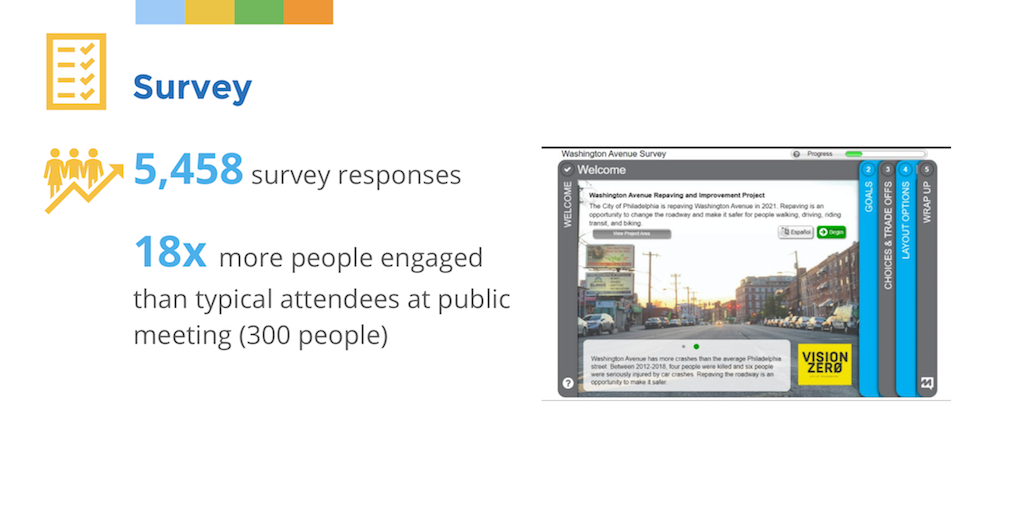
First thing’s first – over 5,000 people filled out the survey. Those are some impressive numbers and give weight to the survey’s findings and recommendations. In addition to the online survey, there were 23 meetings organized by community groups, and this should provide oTIS with more confidence that there will be buy in as this project moves forward. Add in the fact that the oTIS videos describing the different schemes for Washington Avenue received over 11K views, and we can comfortably state that there’s been considerable community outreach and input across multiple platforms.
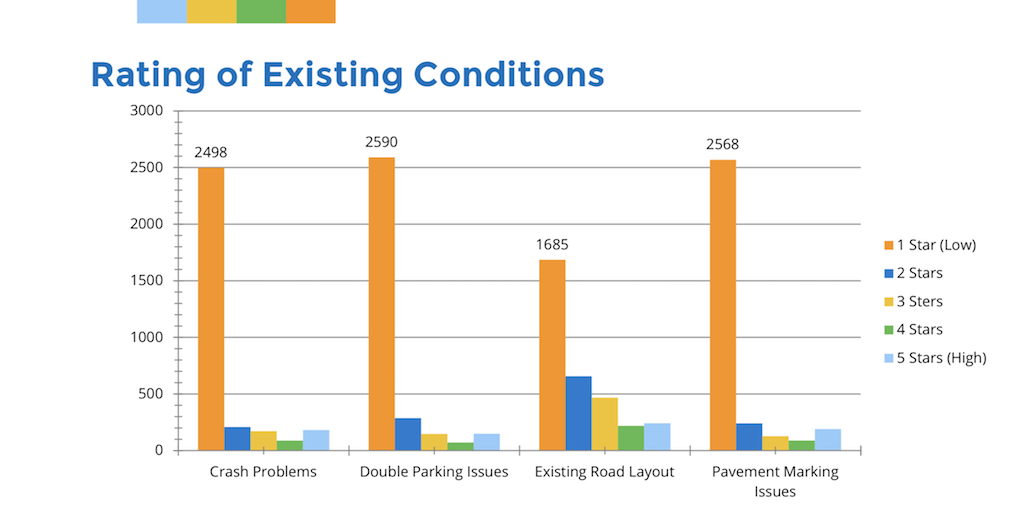
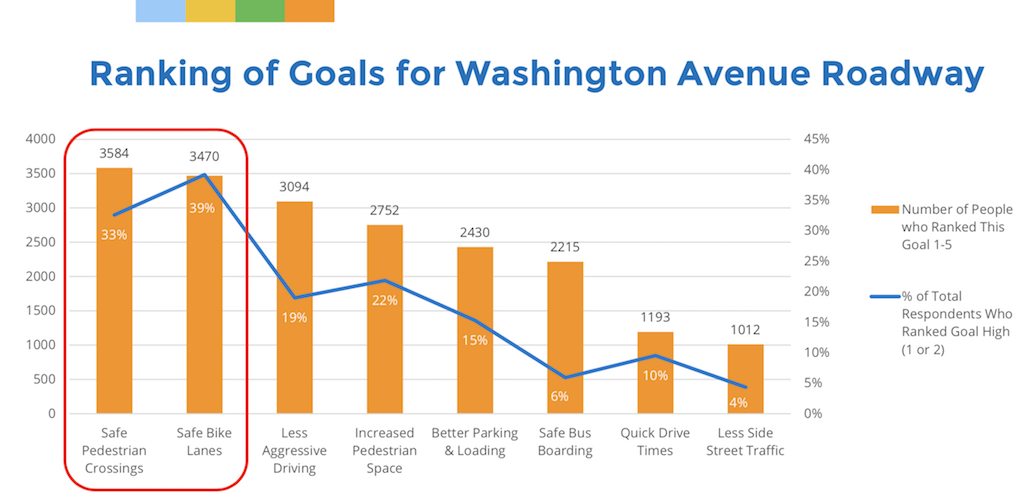
Predictably, very few respondents had anything good to say about the current state of Washington Avenue. People don’t like the double parking or the crash risks or the worn out markings on the pavement, and a smaller portion of respondents took specific issue with the current layout. That being said, the strongest desires from respondents related to increased safety for pedestrians and cyclists, both of which would require a reconfigured corridor to see significant improvement.
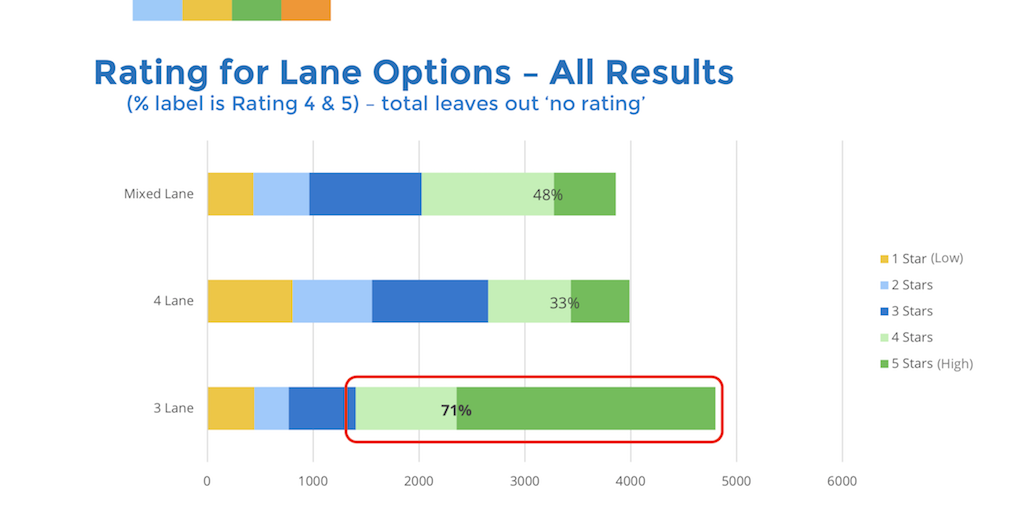
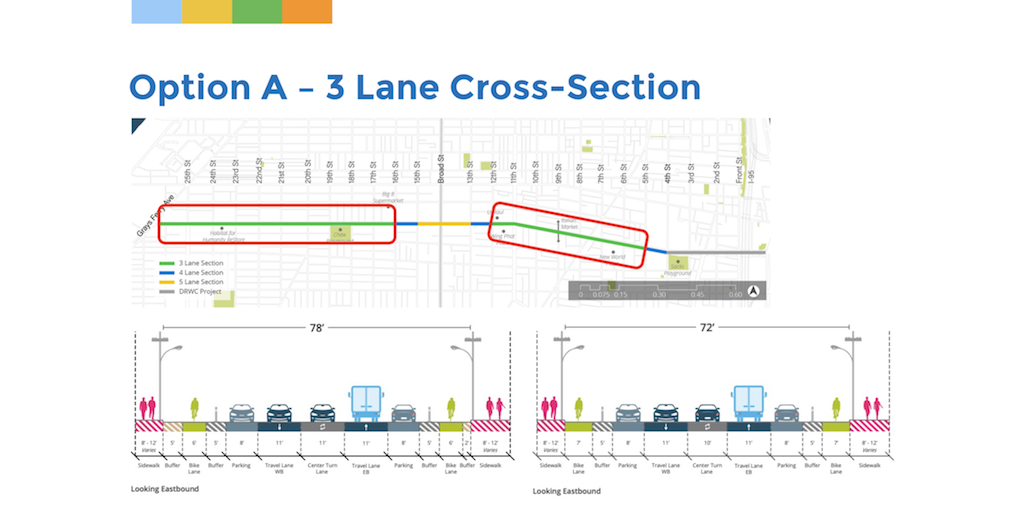
We told you before, oTIS was looking at three approaches to the layout of Washington Avenue, which currently has five traffic lanes. In choosing between a 3-lane approach, a 4-lane approach, or a mix of the two, people were overwhelmingly in favor of 3 lanes. This plan would transition Washington Avenue to three lanes for most of its length, aside from the stretch around Broad Street. It would make the corridor more friendly to pedestrians and bikers, improve the safety of bus stops, and would also allow for expanded sidewalk areas west of Broad Street. Given that side street traffic and drive times were seen as less important goals, it certainly makes sense that the most people would support fewer lanes and better experiences for people not in cars.
As far as next steps, oTIS will next review parking and loading plans on a block by block basis and work with City Council to write legislation to put those plans in place. Concurrently, oTIS will work on a final engineering plan for the repaving, which should take the 3-lane approach most favored by neighbors and stakeholders. That being said, we live in Philadelphia and councilmanic prerogative is very much a thing. If history is any indication, a few squeaky wheels could absolutely overrule the will of the majority for some portions or even all of Washington Avenue. But let’s hope for the best and cross our fingers that the results of this unprecedented outreach effort will be respected and ultimately implemented in 2021. And if you live near Washington Avenue and want that to happen, it probably wouldn’t hurt to call your councilperson’s office and tell them as much.

